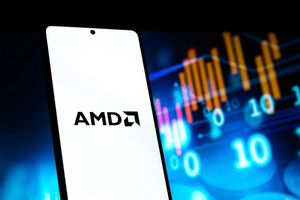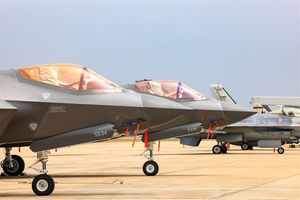The "Human Liver Model Market: Analysis by Product Type, Application, End-use, and Region - Size, Trends and Forecasts to 2030" report has been added to ResearchAndMarkets.com's offering.
The global human liver model market value in 2024 stood at US$1.64 billion, and is projected to reach US$3.81 billion by 2030.
The global human liver model market is primarily driven by the increasing prevalence of liver diseases such as non-alcoholic fatty liver disease (NAFLD/MASLD), alcoholic liver disease (ALD), viral hepatitis, and liver cancer. This growing demand is further propelled by advancements in organ printing technologies like 3D bioprinting, organ-on-a-chip platforms, and organoids, which allow for the creation of more physiologically relevant and predictive human liver models compared to traditional 2D cell cultures or animal models.
Additionally, a strong emphasis on reducing reliance on animal testing due to ethical concerns and the inherent species differences that often lead to inaccurate drug safety and efficacy predictions in humans, significantly boosts the adoption of human-derived liver models.
Finally, the increasing demand for therapeutic drugs for liver cancer and other liver conditions, coupled with the high costs and failure rates associated with conventional drug discovery, incentivizes pharmaceutical and biotechnology companies to invest in these advanced models for more efficient drug screening, toxicity testing, and personalized medicine approaches. The global human liver model market value is projected to grow at a CAGR of 15.03%, during the forecast period of 2025-2030.
The report provides insight into the human liver model market based on the geographical operations, namely, North America, Europe, Asia Pacific and Rest of the World. North America human liver model market enjoyed the highest market share in 2024 due to its robust healthcare infrastructure, significant R&D expenditure by pharmaceutical and biotechnology companies, and a favorable regulatory environment supporting advanced preclinical testing. Meanwhile, Asia Pacific is projected for the fastest growth driven by increasing investments in medical research, a burgeoning biotech industry, rising prevalence of liver diseases, and improving healthcare infrastructure across the region.
Global Human liver model Market Dynamics:
Growth Drivers: One of the most important factors driving the growth of the global human liver model market is the increasing prevalence of liver diseases worldwide. Conditions like non-alcoholic fatty liver disease (NAFLD/MASLD), alcoholic liver disease (ALD), viral hepatitis, and liver cancer are on the rise globally due to lifestyle changes and other factors. This escalating disease burden creates an urgent and growing demand for more accurate, human-relevant research tools to better understand disease mechanisms, develop effective therapies, and conduct efficient drug discovery and toxicity testing. Other factors driving the growth of global human liver model market include growing demand for alternatives to animal testing, increasing focus on personalized medicine, growing investment in liver research, the growing need for early drug toxicity diagnosis etc.
Challenges: One significant challenge faced by the global human liver model market is the high cost and technical complexity associated with developing and maintaining advanced 3D models. While these models offer superior physiological relevance, their creation often requires specialized equipment, skilled personnel, and significant financial investment. This complexity can limit their accessibility and scalability, particularly for smaller research institutions or companies, hindering widespread adoption despite their clear advantages over traditional 2D systems.
Trends: A major trend that will further drive the growth of the global human liver model market is the advancement and increasing adoption of 3D bioprinting and organ-on-a-chip technologies. These innovations are enabling the creation of more sophisticated, physiologically relevant, and high-throughput human liver models that better mimic in-vivo conditions. This improved accuracy leads to more reliable data in drug discovery, toxicity testing, and disease modeling, ultimately accelerating the development of safer and more effective treatments while reducing reliance on traditional, less predictive methods. The market is also projected to grow at a fast pace during the forecast period, due to various other latest trends such as integration of AI and machine learning, advancements in organ printing and tissue engineering technologies, shift from 2D to advanced 3D and ex vivo models, rise of hybrid and in silico models etc.
Competitive Landscape and Recent Developments:
The global human liver model market currently presents a moderately fragmented competitive landscape, although it is showing clear signs of moving towards consolidation, particularly within its more technologically advanced segments. The fragmentation stems from rapid pace of innovation in tissue engineering, microfluidics, and stem cell biology continually giving rise to new biotech startups. Regional market differences and the significant contributions from academic research also contribute to this distributed competitive environment.
However, consolidation is evident in the dominance of a few key players in the cutting-edge 3D model segments (like InSphero, CN Bio Innovations, and Emulate), who possess strong patent portfolios and are often preferred partners for large pharmaceutical companies. This trend is further driven by strategic mergers and acquisitions (M&A) and increasing partnerships, as larger entities seek to integrate specialized technologies and expertise.
Key players of global human liver model market are:
- Organovo Holdings
- InSphero
- BioIVT LLC
- Emulate Inc.
- MatTek
- Mimetas
- CN Bio Innovations Ltd.
- Cyfuse Biomedical KK
- Corning Incorporated
- Phoenix Bio
- Stemcell Technologies
- Pandorum Technologies
- Kirkstall Ltd
Key Topics Covered:
1. Executive Summary
2. Introduction
2.1 Human Liver Model Overview
2.2 Human Liver Model Segmentation Overview
3. Global Market Analysis
3.1 Global Human Liver Model Market Analysis
3.2 Global Human Liver Model Market Product Type Analysis
3.3 Global Human Liver Model Market Application Analysis
3.4 Global Human Liver Model Market End-use Analysis
4. Regional Market Analysis
5. Market Dynamics
5.1 Growth Drivers
5.1.1 Increasing Prevalence of Liver Diseases
5.1.2 Growing Demand for Alternatives to Animal Testing
5.1.3 Increasing Focus on Personalized Medicine
5.1.4 Growing Investment in Liver Research
5.1.5 The Growing Need for Early Drug Toxicity Diagnosis
5.2 Challenges
5.2.1 High Cost of Liver Models
5.2.2 Dearth of Skilled Professionals
5.3 Market Trends
5.3.1 Integration of AI and Machine Learning
5.3.2 Advancements in Organ Printing and Tissue Engineering Technologies
5.3.3 Shift from 2D to Advanced 3D and Ex Vivo Models
5.3.4 Rise of Hybrid and In Silico Models
6. Competitive Landscape
6.1 Global Human Liver Model Market Players: Competitive Landscape
6.2 Global Human Liver Model Market Players: Recent Developments
7. Company Profiles
- Corning Incorporated
- Organovo Holdings Inc.
- InSphero AG
- BioIVT LLC
- Emulate Inc.
- MatTek (The BICO Group)
- MIMETAS
- CN Bio Innovations Ltd.
- Cyfuse Biomedical K.K.
- PhoenixBio Co., Ltd.
- STEMCELL Technologies
- Pandorum Technologies Pvt. Ltd.
- Kirkstall Ltd.
For more information about this report visit https://www.researchandmarkets.com/r/d70sl5
About ResearchAndMarkets.com
ResearchAndMarkets.com is the world's leading source for international market research reports and market data. We provide you with the latest data on international and regional markets, key industries, the top companies, new products and the latest trends.
View source version on businesswire.com: https://www.businesswire.com/news/home/20250905076943/en/
Contacts
ResearchAndMarkets.com
Laura Wood, Senior Press Manager
press@researchandmarkets.com
For E.S.T Office Hours Call 1-917-300-0470
For U.S./ CAN Toll Free Call 1-800-526-8630
For GMT Office Hours Call +353-1-416-8900





